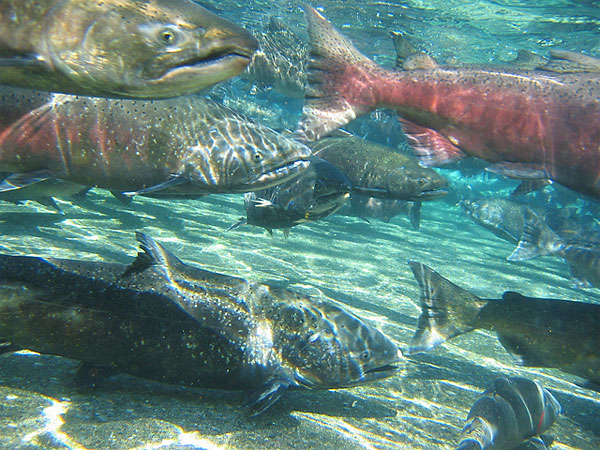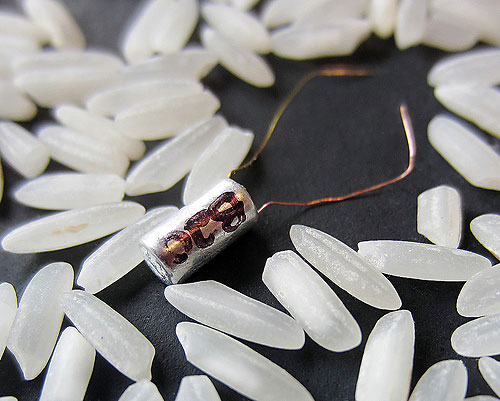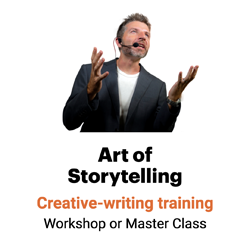PNNL science writer shows how to communicate complex concepts
When Pacific Northwest National Laboratory science writer Tom Rickey wrote a release about the lab’s work “Making dams safer for fish around the world,” he didn’t get lost in the scientific gobbledygook. Instead, he wrote:

“Think of the pressure change you feel when an elevator zips you up multiple floors in a tall building. Imagine how you’d feel if that elevator carried you all the way up to the top of Mount Everest — in the blink of an eye.
“That’s similar to what many fish experience when they travel through the turbulent waters near a dam. For some, the change in pressure is simply too big, too fast, and they die or are seriously injured.
…
“Those sudden changes can have a catastrophic effect on fish, most of which are equipped with an organ known as a swim bladder — like a balloon — to maintain buoyancy
We say “I see” to mean “I understand.” When the writer sees how complex processes work and shows us what he sees, the reader can see and understand too.
And that’s what makes Rickey, PNNL’s senior advisor for News and Media Relations, a master of metaphor.
4 ways to write like Rickey
Tom Rickey started his career as a high school teacher and soccer coach. And — were it not for an incident involving breaking the principal’s car on the way to a soccer match, losing the match 12-0 then losing the principal’s gas credit card on the trip home — he might be still be a high school teacher and soccer coach today.

Want to become a master of metaphor yourself? Take Tom’s tips for clarifying complex concepts using metaphor writing:
1. Picture each step. Visually understand the process you are trying to describe.
“The microbe sticks to the plant,” your subject matter expert says.
How? You ask. Like Velcro? Or does it skewer the plant — like, stick a sword in and then the sword gets stuck, like Excalibur? Or does it just become a big sticky blob, like chewing gum?
You need to know.
For one PNNL release, “How a plant beckons the bacteria that will do it harm,” Rickey wrote:
“A common plant puts out a welcome mat to bacteria seeking to invade, and scientists have discovered the mat’s molecular mix.
…
“… [T]he humble and oft-studied plant Arabidopsis puts out a molecular signal that invites an attack from a pathogen. It’s as if a hostile army were unknowingly passing by a castle, and the sentry stood up and yelled, “Over here!” — focusing the attackers on a target they would have otherwise simply passed by.
“‘This signaling system triggers a structure in bacteria that actually looks a lot like a syringe, which is used to inject virulence proteins into its target,’ … said Thomas Metz, an author of the paper and a chemist at the Department of Energy’s Pacific Northwest National Laboratory.”
2. Ask. Ask again. Keep asking. Ask the source — again and again, if necessary — to describe the process.
When PNNL engineers invented a chemical reactor that produces crude oil from algae, Rickey knew that timing was everything. So he asked the subject matter expert — again and again — how long the process took. By the third interview, Rickey still wasn’t getting the answer he was looking for.
“At one point he gave me maybe a 500-word answer, very complex, and I just kept pushing,” says the senior advisor for News and Media Relations for Pacific Northwest National Laboratory. Rickey finally asked, “Well, from the time you put algae in the front end, how long before you get oil out the back end?”
The scientist “did all sorts of mathematical tricks and then said, ‘about 45 minutes.’ And there I knew I had it.”
For the resulting release, he wrote the headline “Algae to crude oil: Million-year natural process takes minutes in the lab.” Here’s the lead:
“Engineers have created a continuous chemical process that produces useful crude oil minutes after they pour in harvested algae — a verdant green paste with the consistency of pea soup.
…
“In the PNNL process, a slurry of wet algae is pumped into the front end of a chemical reactor. Once the system is up and running, out comes crude oil in less than an hour, along with water and a byproduct stream of material containing phosphorus that can be recycled to grow more algae.”
The release went viral. It generated 250,000 hits on the PNNL website, another 250,000 hits on the video, and coverage around the world.
3. Do the math. Analogies help readers see size and scale. So how small is small? How huge is huge?

For “A battery small enough to be injected, energetic enough to track salmon,” Rickey wanted to show how small the battery was. He toyed with “pencil eraser,” “fingernail” and a few other analogies.
“But really,” he says, “I got hold of this thing, and it looked like a grain of rice.”
Here’s the lead:
“Scientists have created a microbattery that packs twice the energy compared to current microbatteries used to monitor the movements of salmon through rivers in the Pacific Northwest and around the world.
“The battery, a cylinder just slightly larger than a long grain of rice, is certainly not the world’s smallest battery, as engineers have created batteries far tinier than the width of a human hair. But those smaller batteries don’t hold enough energy to power acoustic fish tags. The new battery is small enough to be injected into an organism and holds much more energy than similar-sized batteries.”
The result: That analogy “took off around the world,” Rickey says.
4. Make a metaphor. Next, compare your complex topic to something real, tangible and present in everyday life.
Your experts likely have metaphors that they use often. But give yourself the authority to improve upon them. Chances are, you’ll be able to take the analogy much further than your expert ever could.
For the release “Scientists Discover Previously Unknown Cleansing System in Brain,” Rickey crafted this analogy:
“The team found that glial cells called astrocytes use projections known as ‘end feet’ to form a network of conduits around the outsides of arteries and veins inside the brain — similar to the way a canopy of tree branches along a well-wooded street might create a sort of channel above the roadway.”
Master your metaphors.
Follow these steps for metaphor writing, and you too will soon be a master of metaphor.

Leave a Reply